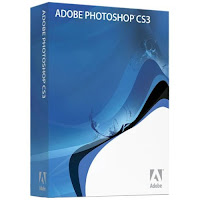Every single piece of media text that is produced, all contain messages and attitudes; a secret agenda that the producers have used. These are ideologies and are shared by culture or society and influence the way in which society should function. In sociological terms, ideology is a body of ideas or beliefs that underpins a process or institution that leads to social relation.
Dominant ideology
Dominant ideologies are the messages that are repeated over a long period of time by important social institutions (e.g. church, education, law and the media). They start to become part of everyday life and often people follow the policy of no questions asked as they see it as common sense, this creates a sense of stability for the community.
Dominant ideologies include beliefs about gender, social status and the economy. One idea that is dominant in the more westernised countries is the idea of consumerism, which is where the person is only worth as much as they own, the more they have the more wealth they have and the happy they are. Another concept that is repeated subtly is the belief that violence and force can solve any problem or conflict as shown in action films like die hard.
Mainstream media use dominant ideologies as the audience is more likely to accept the media text, if they challenge societies ideologies then the majority outcome will be that the product will be rejected, resulting in loss of profits. It is very rare that audiences will accept products that challenge the normal format. One success story is rocky horror picture show which breached a lot of the ideologies that were around at the times of its release.
Marxist theory

Karl Marx was the founder of the Marxist theory; he argued that high or aristocratic classes could control the ideas that would be enforced subtly within society at the time. It would affect all aspects of life including religion which was sacred to civilians. He expressed the idea that it is “god’s will” that you’re born into wealth or poverty, if you were unfortunate enough to be born into poor families then you would be rewarded when you go into the next life. Resulting in the disguise of inequality that is present within the country, making it easier for ideologies to suppress the structure of domination and exploitation that exists within society.
Marxists view capitalist society as being one of class domination; the media are seen as part of ideological arena in which various class views are fought out. In both classical and fundamental Marxism, ideology is false consciousness which results from the emulation of the dominant ideology by those whose interest it does not reflect. From this perspective the mass media disseminate the dominant ideology; the values of the class which owns and controls the media.
Antonio Gramski

One theorist that criticized the Marxist view that the society was consuming the media was passive was Antonio Gramski. He claimed that the ruling classes (high class) controlled ideas due to naturalisation. They used ideologies to persuade audiences that the ideologies they were promoting were normal and natural.
Gramski believed that media industries are locked into a power structure resulting in conflict between there ideologies and the dominant ideologies in society.
By Hannah Tabor















.jpg)
































